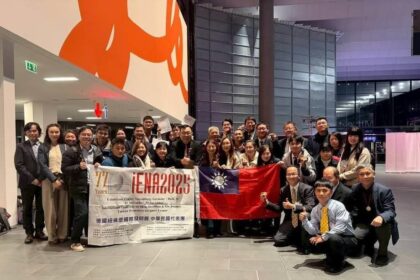A superaged nation weighs how to keep older Koreans working
South Korea is moving toward one of its most consequential labor changes in decades. The ruling Democratic Party is preparing legislation to lift the statutory retirement age from 60 to 65 on a phased schedule that would begin as early as 2027 and align fully with national pension eligibility by 2033. Supporters say the change would close the years long income gap before pensions start and help reduce old age poverty. Business groups warn it will raise labor costs, slow new hiring for young workers, and lock in rigid workplace rules unless the wage system is modernized at the same time.
- A superaged nation weighs how to keep older Koreans working
- Why the change is on the table
- What the current proposals would do
- Labor movement sees a poverty buffer
- Business groups warn about costs and hiring
- The wage question at the heart of the fight
- Does keeping seniors longer reduce youth jobs
- Lessons from Japan and other aging economies
- Politics, timing, and what compromise could look like
- At a Glance
The debate sharpened after the party launched a special committee on Nov. 3 to coordinate with major unions and employer groups. Multiple bills are in circulation, including a proposal to step up the retirement age to 63 in 2027, 64 in 2032, and 65 in 2033. The ruling camp wants a bill before the end of the year, yet the distance between labor and management suggests hard bargaining ahead.
At stake is how the country manages a rapid transition to a much older population and a shrinking pool of workers. The policy choice will affect company payrolls, career paths for younger graduates, and the finances of seniors who often face unstable jobs once they leave full time roles at 60. It is a social choice as much as a labor rule, and it will shape how generations share work and income in the years ahead.
Why the change is on the table
South Korea has become a superaged society, with more than one in five residents aged 65 or older. Fertility is the lowest in the world, last measured at 0.75 children per woman. The working age population, which peaked at 37.6 million in 2019, is projected to fall below 30 million by 2040, according to government data. The country’s large baby boom cohort, about 9.5 million people, is retiring in large numbers. That exit would drain experience and could strain growth if not managed carefully.
Pensions start later than most employees retire. The legal retirement age was standardized at 60 across workplaces in 2017. For people born between 1964 and 1973, the National Pension Service pays benefits from age 63. From 2033, pension eligibility rises to 65. Many older workers face three to five years without a stable income after formal retirement. Many take low paid or irregular work to make ends meet. This helps explain why Korea has the highest old age poverty rate among advanced economies.
Supporters of raising the retirement age argue that extending formal employment to 65 would bridge that income gap. They say it would keep skilled workers in their jobs longer, allow for gradual career wind downs, and ease pressure on social welfare programs by reducing the number of seniors with no paycheck before pensions begin.
What the current proposals would do
Lawmakers are considering a phased lift toward 65 that matches the step up in pension eligibility. One leading bill targets 63 by 2027, 64 by 2032, and 65 by 2033. The aim is to give companies time to adjust staffing, training, and pay structures, and to allow labor and management to negotiate how roles and responsibilities shift as more people work into their mid 60s.
To build consensus, the National Assembly working group is conferring with the two major union federations, the Korea Confederation of Trade Unions and the Federation of Korean Trade Unions, along with the Korea Enterprises Federation, which represents employers. The talks also cover alternatives to a uniform legal extension, such as a continued employment obligation after 60 through reemployment contracts. That model is used in Japan, where many firms retire workers at 60 but rehire them to ensure continued employment to 65, sometimes with changes in duties or hours.
Passage is not guaranteed. The ruling party wants to legislate by year end, yet business groups seek wage reform in parallel, and some policymakers favor a reemployment route rather than a blanket change to the legal retirement age. Whatever emerges will likely be phased and accompanied by guidance on pay and job design for older employees.
Labor movement sees a poverty buffer
Unions frame the reform as an urgent response to old age poverty and a shrinking workforce. They say a later retirement age is the simplest way to cover the years before pensions begin, and that fears of productivity loss or youth displacement are overstated.
Yang Kyung su, who leads the Korea Confederation of Trade Unions, links the proposal to long term demographic realities and a need to protect vulnerable seniors. He also argues that the right mix of policies can help both ends of the age spectrum.
Introducing his position, Yang said the priority is to prevent hardship as the country ages and to create decent jobs for younger people at the same time. He called extending the retirement age a necessary part of that plan.
Even if the birthrate rebounds today, the working age population will inevitably continue to decline over the next 20 years. We need policies that can alleviate old age poverty through extending the retirement age and give young people hope by creating more quality jobs.
Kim Dong myeong, head of the Federation of Korean Trade Unions, described the measure as a fair way to prevent a slide into poverty for older workers who would otherwise be left without income between 60 and pension age.
Extending the retirement age is a very reasonable demand to prevent people from falling into poverty in old age.
Advocates also point to employment realities. Many workers in their late 50s face wage reductions under so called peak wage arrangements and then mandatory retirement at 60. The practice can push people into temporary or part time roles, with much lower pay and limited benefits. A recent human rights study criticized age related wage cuts and forced exits as harmful to older workers. Bridget Sleap, a researcher who reviewed company practices and interviews with affected workers, said such policies undermine rights and fuel low income among seniors.
They deny older workers the opportunity to continue working in their main jobs, pay them less, and push them into lower paid, precarious work, all just because of their age. The government should stop punishing workers for getting older.
Union leaders also argue that keeping experienced staff until 65 can support productivity and help companies pass on skills to younger teams. They favor an extension without across the board wage cuts, coupled with investments in training, safety, and age friendly workplaces.
Business groups warn about costs and hiring
Employer groups accept the demographic challenge but argue that a mandatory extension to 65, without changes to how wages are set, would impose heavy costs and reduce opportunities for young jobseekers. The Federation of Korean Industries estimates that expanding the retirement age from 60 to 65 could add roughly 30.2 trillion won in annual labor costs by keeping about 590,000 regular employees aged 60 to 64 on payrolls. The group compares that burden to the cost of hiring roughly 900,000 workers in their late 20s.
Central bank research highlights a trade off for new entrants. The Bank of Korea found that retaining one extra older worker can displace between 0.4 and 1.5 younger workers, based on past experience and economic conditions. The bank also estimated that delaying retirement by a single year could remove around 50,000 regular youth jobs in a typical year, especially in a slow growth environment.
Employers prefer a rehire system after age 60, with new contracts that can adjust salary, hours, and duties to reflect the role. They say this approach can expand work for seniors while creating space for new graduates. The Korea Enterprises Federation is urging lawmakers to pass a special law on reemployment that promotes continued work after 60 through separate contracts rather than extending the legal age across the board.
In a formal position, the employers federation warned that a one size fits all extension would be hardest on small and midsize firms and could deepen tensions between generations competing for the same roles. The body also said seniority based pay, under which wages rise largely with years of service, must be modernized so that pay reflects jobs and performance rather than age or tenure.
The group summarized its stance in a statement urging lawmakers to prioritize flexible tools that keep seniors working without blocking new hiring.
Only if senior employment is expanded through a rehiring system of ending existing employment contracts and signing new ones can negative effects on youth employment be mitigated.
Employer leaders also argue that Korea’s wage system has not kept pace with a lower growth era. They call for job based pay and performance evaluations, and they cite recent government support for the principle of equal pay for equal work. Business advocates say any retirement reform should come with incentives to rehire seniors and with clear legal frameworks that allow firms to adjust roles and hours after 60.
The wage question at the heart of the fight
At the core of the dispute is how Koreans are paid. Many large companies and public sector bodies still use seniority based pay, where wages step up with tenure. That legacy system helped support lifetime employment in the rapid growth decades but now creates a steep pay curve late in a career. A peak wage practice, in which companies reduce pay for employees in their late 50s ahead of retirement at 60, is common. The intention was to free up resources for hiring and to smooth productivity. The outcome for many has been lower pay and then an abrupt exit from standard employment.
Employer associations argue that changing the retirement age without changing this pay architecture would cement high costs in the most expensive years. They want room to move older staff into roles with different responsibilities, lighter schedules, or mentoring duties, with compensation adjusted to the job. Some large firms already rehire retirees on fixed term contracts at about 70 percent of prior pay. A national framework for that approach, supported by incentives, is one option on the table.
Academic experts point to data that underscores the rigidity of the current system. Research cited by policymakers finds that a regular employee with more than 30 years of service earns nearly three times the wage of a new hire. That spread is wider than in peer economies. At the same time, more than half of workplaces have no formal wage system at all, which exacerbates a dual structure where large and public employers follow rigid rules and many smaller firms operate with informal arrangements.
This is why many see wage reform and retirement reform as inseparable. A modern system that reflects job content and performance could make it easier to keep more people employed into their mid 60s without squeezing entry level hiring. Labor voices counter that wage reform must not become a pretext for blanket pay cuts. They favor industry by industry talks that link adjustments to specific job content, safety, reskilling, and voluntary changes in hours.
Does keeping seniors longer reduce youth jobs
There is evidence of a trade off in tight labor markets or during downturns. The Bank of Korea’s estimates of displacement effects have fueled concerns among young jobseekers. Surveys of younger adults show strong anxiety that later retirement will limit openings and lower promotion speed. Many graduates already face intense competition for a limited number of roles at large companies and in the public sector.
Other researchers say the effect is not mechanical and depends on growth, job design, and how companies adjust pay. Some economists argue that older and younger workers often perform different tasks, so one for one substitution is less common when firms expand. They point to Japan’s experience, where continued employment after 60 became widespread while youth unemployment stayed low. The counterpoint is that Japan coupled continued employment with wage adjustments, flexible hours, and public subsidies to support the model.
The quality of jobs also matters. If firms rehire seniors at pay and hours that reflect modified duties, they may continue to bring in young staff, especially in roles that require fresh technical skills. If pay at the top stays rigid, firms may delay intake. Policymakers are weighing both sets of evidence as they craft a balanced approach.
Lessons from Japan and other aging economies
Japan provides the closest template. In 2006, it kept the legal retirement age at 60 but required companies to secure continued employment to 65 through one of three options. Most firms chose reemployment on new contracts. The government later strengthened the framework and offered a benefit for the elderly that tops up wages when post retirement pay falls below three quarters of prior earnings. The support, funded through employment insurance, can add 10 to 25 percent of monthly wages, which encourages both firms and workers to accept adjusted roles.
That architecture pushed companies to adopt reemployment paths at scale. It also normalized role changes after 60, such as moving into mentoring, training, safety, or project roles that suit experience. The approach did not eliminate pressures on young jobseekers, yet it provided a bridge for older workers without simply extending the legal age. Korea’s employer groups want a similar model, with added room to shift pay toward job content and performance.
European countries have moved in another direction, raising pension ages and often linking retirement age to life expectancy. Many also allow partial retirement, where workers reduce hours while drawing a portion of their pension. Korea’s pension rules are different and replacement rates are lower, covering only a share of prior wages. Actuarial reviews warn that without reform the pension fund could face depletion in the 2050s. This makes continued work more important for household finances and for the tax base.
Any Korean model will need local tailoring. That includes rules for small businesses, which face higher labor cost ratios and lean HR capacity, along with targeted support for reskilling and age friendly workplaces. It also means protecting against discrimination so that older workers are not trapped in low quality roles and younger workers continue to see clear pathways into career jobs.
Politics, timing, and what compromise could look like
The ruling party wants to introduce a detailed bill before year end. The special committee is collecting positions from unions and employers and reviewing options that combine a phased legal extension with a reemployment route. Lawmakers are weighing whether to apply changes across the board or to adopt measures that differ by company size and sector.
A compromise path could include these elements. First, a gradual lift in the statutory retirement age to align with pension eligibility. Second, a clear legal framework for reemployment after 60, with guidance on job redesign, training, safety, and the use of fixed term contracts. Third, wage modernisation toward job based and performance based pay, negotiated at industry or company level, with protections against arbitrary cuts. Fourth, targeted support for small and midsize firms, including subsidies for training, technology, and part time routes for older staff. Fifth, programs that invest in young workers’ skills and internships, so that entry level hiring continues even as more seniors stay.
Public sector institutions could pilot the new model, providing examples for job redesign, mentoring, and role rotation. Transparent reporting on hiring, retention, and pay outcomes by age group would help the public judge whether the reform is improving fairness. The policy goal is straightforward, keep more seniors working in good jobs without closing doors to the next generation. The exact mix of rules and incentives will determine whether the country meets that test.
At a Glance
- Ruling party lawmakers are drafting a phased plan to raise the statutory retirement age from 60 to 65, with full alignment to pension eligibility by 2033.
- The change targets a three to five year income gap before pensions begin, a gap that pushes many seniors into low paid or irregular work.
- South Korea is a superaged society with the lowest fertility rate in the world and a shrinking working age population expected to fall below 30 million by 2040.
- Employer groups estimate added annual labor costs of about 30.2 trillion won if retirement moves to 65 without wage reform.
- Bank of Korea research suggests retaining one older worker can displace 0.4 to 1.5 younger workers, with around 50,000 youth jobs at risk from a one year delay in retirements.
- Unions say extending the retirement age will reduce old age poverty and keep skills in the workplace, and they call for investments in training and safety for older staff.
- Employers favor a reemployment model after 60, with new contracts that align pay and duties, and they urge a shift toward job based and performance based pay.
- Japan’s continued employment approach pairs reemployment with public wage top ups and is a reference point for Korea’s debate.
- Policymakers are exploring a compromise that combines a phased extension, reemployment rules, wage modernization, and support for small firms and young jobseekers.
- A bill is expected at the National Assembly before the end of the year, with final design dependent on labor management negotiations and political consensus.











